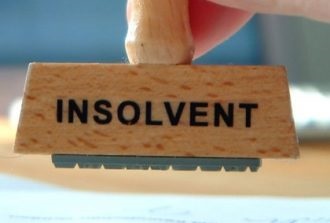 Companies’ possibility to avoid paying creditors (and in particular the payment of tax receivables) simply by declaring their insolvency would be drastically limited, according to a draft emergency ordinance under preparation at the Ministry of Finance.
Companies’ possibility to avoid paying creditors (and in particular the payment of tax receivables) simply by declaring their insolvency would be drastically limited, according to a draft emergency ordinance under preparation at the Ministry of Finance.
Among amendments intended to the draft OUG for Law 85/2014 on insolvency proceedings, we note the following:
- Tax inspection bodies will be able to run checks and register new claims on the debtor also after it notified the opening of insolvency proceedings in the Insolvency Proceedings Bulletin (BPI).
- „Budgetary receivables established by a tax decision issued after the opening of the procedure, which concerns the previous activity of the debtor”, are also considered as preceding the opening date of the procedure, according to the draft mentioned.
- The condition is for the tax authority to make the inspection within 60 days from the date when the notification of the procedure opening is published in the BPI.
- Tax inspections on taxpayers under the insolvency procedure should be made only when there is a fiscal risk of not declaring significant tax liabilities and when the possibility of recovering the amounts also exists.
- The minimum amount of the claim for which the application for opening the insolvency procedure can be submitted is RON 40,000 lei.
- When the application for the opening of insolvency proceedings is submitted by the debtor, the threshold is RON 40,000 and the amount of the budgetary receivables is less than 50% of the total debtor’s debts.
- Budgetary receivables will no longer exceed the 50% threshold of total claims on the debtor if the insolvency has been requested by the debtor.
- The proposal intends to prevent the opening of the insolvency procedure that is aimed at avoiding the payment of budgetary obligations.
- It is intended the reduction from 50% to 30% of the value of receivables registered at the body of creditors for which a creditor, the insolvency administrator or the liquidator can trigger the action for patrimonial liability of the persons identified as culpable for the debtor’s
- It also regulates the possibility of formulating the remedy by the creditor who owns more than 30% of the value of the receivables registered at the body of creditors against the decision of rejecting the action for liability.
- The appointment of the insolvency administrator/liquidator who will administer the procedure will be made on random basis if the request for opening the procedure was made by the debtor.
- The law should thus avoid conflicts of interest, namely the administration, even of a temporary nature, of a company by a practitioner selected by the members of the company’s management structures who, following the measures that preceded the opening of the procedure, determined its insolvency.
- The avoidance of other factors that violate the insolvency procedure would be ensured through a regime of incompatibilities related to the appointment of the specialists by the insolvency administrator.
- Persons who have collaboration relations with the insolvency administrator/liquidator, the debtor under the insolvency procedure or any of the creditors cannot be appointed.
- It is provided for the possibility of converting the budgetary receivables into shares if several conditions are cumulatively met:
- The reorganization of the debtor to make the continuity in the activity possible;
- The settlement of the tax claim through the conversion into shares to maximize the recovery of the state’s receivables as compared to the situation in which the debtor goes bankrupt;
- the conversion is made in full and based on the value of the tax claim owned, and cannot be cumulated with the tax claim reduction measure;
- if the state is not a shareholder in the respective company, the shares obtained from the conversion, the rights and obligations of the Romanian state fall under the responsibility of the Authority for State Assets Management.
- Any of the creditors or the insolvency administrator may at any time request the syndic judge to order the debtor’s bankruptcy, if the debtor does not comply with the plan or the business operation produces losses or registers new debts in relation to the creditors from the procedure.
- The request will have to be dealt with under the urgent procedure and with priority, within maximum 30 days from its registration in the case file. The current law provides for the judgment under the urgent procedure and with priority but also provides for a maximum period.
The business community has long complained about the loopholes of the insolvency law and other provisions that make the insolvency procedure a management method.
The ease with which companies use the insolvency method is one of the structural obstacles to a faster credit growth, according to an analysis made by a group of economists coordinated by Valentin Lazea, published in the latest edition of study booklets of the National Bank of Romania’s (BNR).









